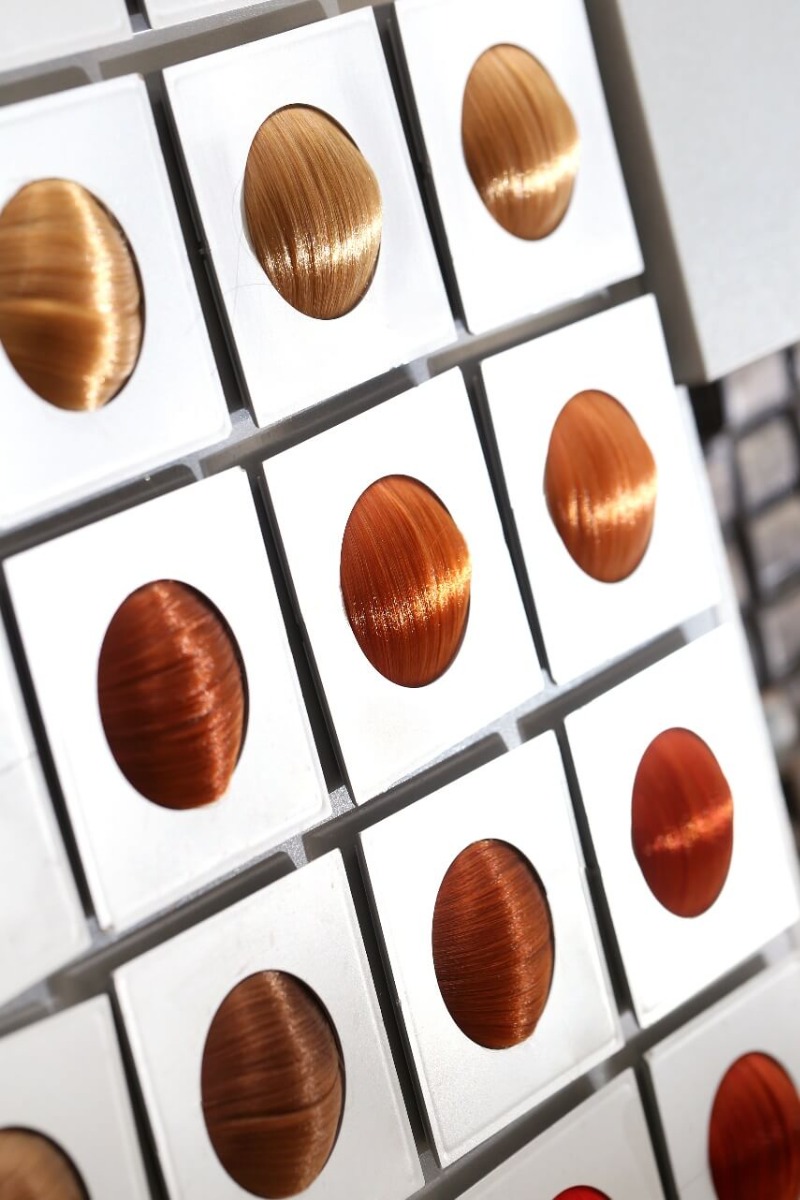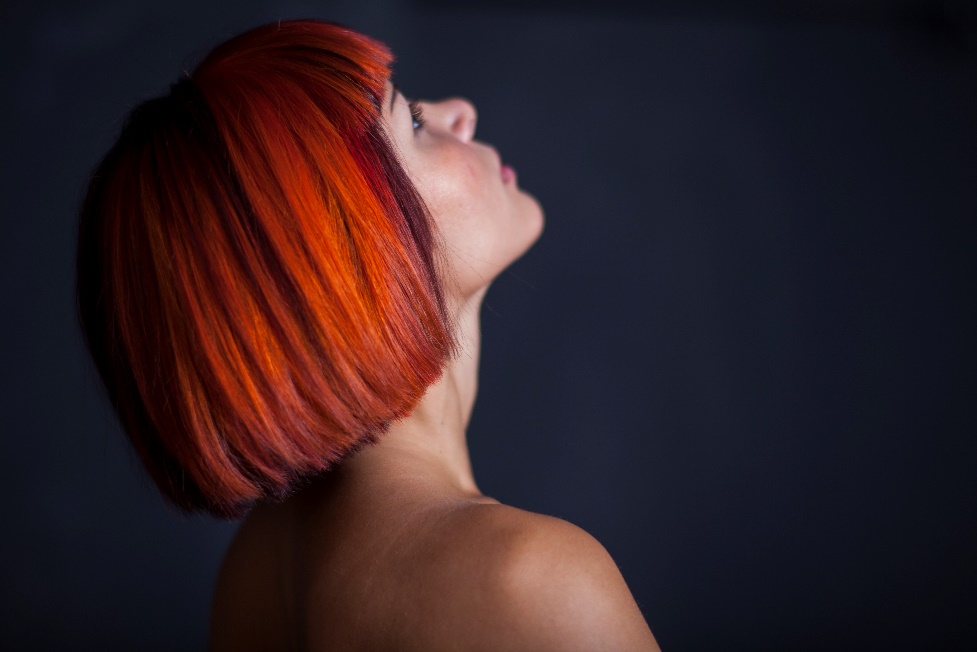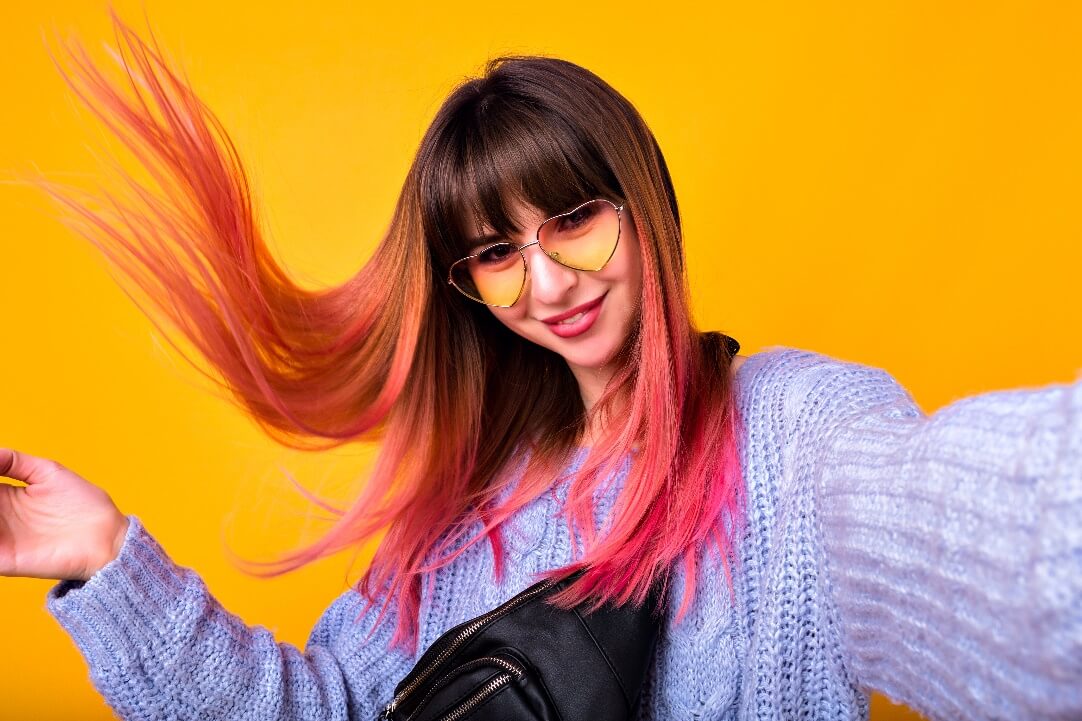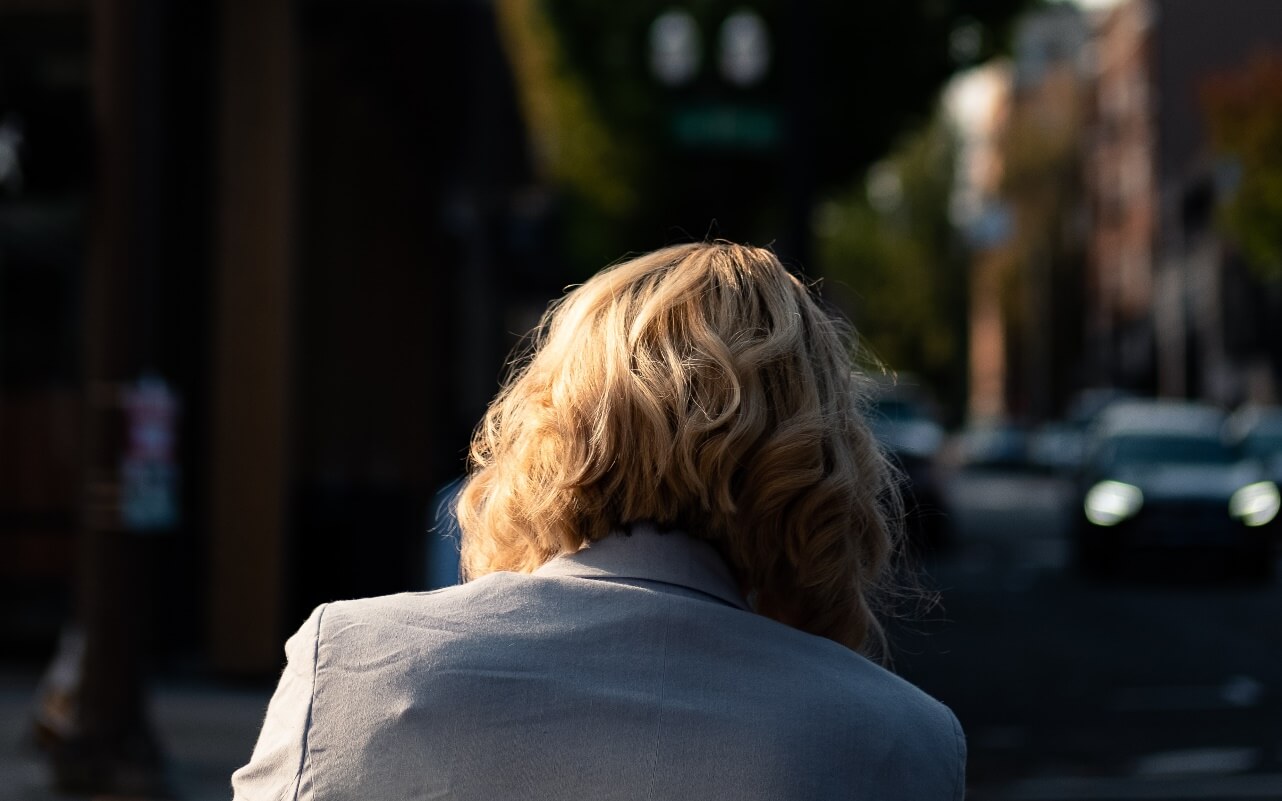Safe Coloring Techniques for Zero Hair Damage
- Written by Lisa Sawter
- |
- Reviewed by Isidro Almaraz
- Aug 27, 2023
- |
- 11 min read
 Listen to the full text
Listen to the full text
In today's ever-changing world of beauty and fashion, hair color trends are constantly evolving, offering a spectrum of vibrant hues that allow individuals to express their unique personalities. Whether it's the allure of sun-kissed highlights, the richness of luscious brunettes, or the audacity of striking blues and pinks, hair coloring has become an integral part of modern self-expression. However, amid the excitement of embracing a new hair color, it's essential not to overlook the potential harm that aggressive coloring techniques can inflict upon our precious locks.
The desire for flawless hair often pushes people to resort to chemical-laden dyes and harsh bleaching processes, oblivious to the fact that these practices can lead to significant hair damage. Brittle, lifeless strands, split ends, and overall loss of hair integrity are just a few consequences that can arise from reckless hair coloring. The pursuit of beauty should not come at the cost of hair health, and that's where the concept of "Safe Coloring Techniques" comes into play. In this article, Lordhair will explore the world of safe coloring techniques, uncovering the methods behind preserving hair health.

Balayage, Ombré and Beyond: Hair Coloring Techniques
Safe coloring techniques are centered around empowering people to embark on a hair coloring journey without compromising their hair's natural brilliance. It is a transformative approach that ensures your locks remain as vibrant and lustrous as ever, all while safeguarding their health and integrity.
These techniques also include the mastery of artistic hair placement, such as balayage and ombre. These specialized methods allow colorists to blend hues seamlessly, providing a soft and natural-looking transition between colors. By strategically applying color to specific sections of the hair, these techniques create depth and dimension, reducing the need for all-over dye applications and minimizing damage.
Balayage
Balayage is a French word that translates to "sweeping." It is generally considered a safer coloring technique compared to traditional full-head dyeing or aggressive highlighting methods. The balayage process starts with the hairstylist strategically selecting sections of the hair to apply the color. The color is then expertly swept onto the surface of the hair using a brush or paddle, allowing for a more customized and personalized result. The stylist can choose to paint the color subtly for a soft and natural look or more boldly for a more dramatic effect.
One of the key benefits of balayage is its versatility. It can be adapted to suit various hair lengths, textures, and colors. Whether you have short hair, long hair, straight hair, or curly hair, balayage can be tailored to enhance your natural beauty and add depth to your locks.
Also, the color is applied in a way that mimics the way the sun naturally lightens hair, regrowth lines are less noticeable. This means longer intervals between touch-ups, making it an ideal option for those with busy lifestyles or those who prefer a more effortless hair color maintenance routine.

Ombré
The ombré hair dye technique has become a popular and stylish trend in the world of hair coloring. Derived from the French word "ombré," meaning "shaded" or "shadow," this technique involves seamlessly blending two or more hair colors to create a beautiful gradient effect. The result is a stunning, sun-kissed appearance that adds depth and dimension to the hair. Ombré hair can be customized to suit various hair lengths, textures, and colors, making it a versatile choice for those looking to refresh their look without committing to high-maintenance hair coloring.
The ombré process begins with selecting the desired colors. Typically, the roots are dyed in a darker shade that gradually transitions to a lighter hue towards the tips. Popular choices include natural shades like brunettes transitioning to caramel or honey blondes. However, adventurous individuals may opt for vibrant colors like blues, purples, or pinks for a more daring and unique ombré effect. The outcome is an elegant and natural-looking gradient that complements the wearer's features and enhances their overall appearance.
One of the key advantages of the ombré hair dye technique is its low-maintenance nature. Since the lighter color is focused on the lower lengths of the hair, regrowth is less noticeable compared to traditional full-head hair coloring methods. This means longer intervals between touch-ups, making it a practical option for individuals with busy lifestyles or those seeking a hair transformation without constant salon visits.

Sombré
Sombré, short for "subtle ombre," is a hair coloring technique that is a softer and more understated version of the traditional ombré. Just like ombre, sombré involves a gradual color transition from darker roots to lighter ends. However, the key difference lies in the subtlety of the effect. Sombré creates a more natural and blended look, with a seamless transition between the two colors.
The sombré technique is achieved by strategically hand-painting or balayaging the color onto specific sections of the hair. The focus is on creating a soft and gentle shift from the base color to the lighter shade. This allows for a more natural and sun-kissed appearance as if the hair has naturally lightened over time from sun exposure.
Sombré is a versatile hair coloring option that can be adapted to suit various hair types and lengths. It works well on both light and dark hair colors and can be customized to complement an individual's skin tone and personal style. The subtle nature of sombré makes it a great choice for those seeking a low-maintenance hair color that seamlessly grows out without obvious regrowth lines. This technique is often favored for its timeless appeal and its ability to add dimension and depth to the hair without the intensity of a traditional ombré.
Highlights and lowlights
Highlights and lowlights are hair coloring techniques used to add dimension and depth to the hair. These techniques involve applying different shades of color to specific sections of the hair, creating contrast and a multi-dimensional appearance.
Highlights are lighter strands of color applied to sections of the hair. They are typically a few shades lighter than the base color and are strategically placed to catch the light and create a brightening effect. Highlights can be placed throughout the hair, starting closer to the roots or mid-lengths and extending to the ends. They add a sun-kissed and vibrant look, especially when the hair catches natural or artificial light.
Lowlights, on the other hand, are darker strands of color applied to the hair. They are usually a few shades darker than the base color and are used to create depth and richness. Lowlights add contrast to the overall hair color, and they can be placed strategically to add dimension and create a more natural appearance. They are particularly useful when the hair lacks depth or looks too monochromatic.
The combination of highlights and lowlights creates a more dynamic and visually appealing hair color. The contrast between the lighter and darker tones adds texture and movement to the hair or maybe even your hair system, making it look more voluminous and interesting.

Is It Safe to Dye Hair Systems?
You may even be looking at dyeing your hair system if you own one and want to seriously change up your style. However, there are some important considerations to keep in mind to ensure a successful and safe coloring process.
Coloring can be damaging to the hair and may reduce the lifespan of the hair s`ystem, especially if the hair has already undergone treatment and processing during production. In such cases, you would essentially be coloring a hair system that has already been colored previously. This double coloring process can put additional stress on the hair fibers, leading to potential dryness, brittleness, and a shorter overall lifespan of the wig or hairpiece.
It's important to exercise caution when considering dyeing a pre-colored hair system and consult with a professional wig specialist who can advise on the best course of action to achieve your desired color while preserving the quality and integrity of the hair system.
What Color Hair System Should You Purchase?
Ensuring a seamless match between your existing hair and the wig color is crucial. Here are three popular options to achieve the perfect color harmony:
#1 Utilize Lordhair color images
Lordhair provides a comprehensive color image guide to help you find the ideal shade that complements your natural hair. This visual reference allows you to compare various color options and make an informed decision.
#2 Employ Lordhair color rings/swatches
With the Lordhair Color Ring or Swatch, you can physically assess the colors up close. This tangible resource allows you to see the shades firsthand and select the one that best aligns with your hair.
#3 Provide a hair sample
To achieve the utmost accuracy, you can submit a hair sample from your natural hair. By doing so, the experts at Lordhair can custom-match the wig color to your specific hair color, ensuring flawless integration.
Safe Coloring Techniques: Conclusion
Safe hair coloring techniques are essential to achieving beautiful and vibrant hair while ensuring the health and integrity of the hair and scalp. Whether you opt for classic highlights, lowlights, ombré, sombré, balayage, or any other coloring method, following best practices and taking necessary precautions will show you how to prevent damage when coloring hair.
Choosing high-quality hair dye products from reputable brands, conducting patch tests to check for allergies, and seeking professional help when in doubt are all crucial steps in ensuring safety during the hair coloring process. Proper application, using the right tools and techniques, and adhering to recommended processing times are equally important to prevent hair damage and achieve desired results.
Post-coloring care is essential for maintaining the vibrancy and health of colored hair. Using color-safe hair care products, regular deep conditioning, and limiting heat styling can contribute to preserving the color and keeping the hair nourished and hydrated.
While hair coloring can be a fun and transformative experience, it's essential to prioritize the safety of your hair and scalp. By following safe hair coloring techniques and seeking guidance from professional hairstylists, you can enjoy the benefits of beautifully colored hair without compromising on its health and vitality.
Choose Lordhair
If you are considering safe hair dyeing for your hair system or wigs, Lordhair offers a wide array of options to suit your requirements. Our diverse selection of hair systems (also commonly known as men’s human hair wigs, hair toupees, hair units, and men’s hairpieces) and women’s wigs is thoughtfully crafted to cater to your individual needs and preferences. We strive to deliver hair replacement solutions that not only look fantastic but also provide the utmost comfort and security.
To begin your transformative journey, reaching out to us is hassle-free. You can contact us at support@lordhair.com or explore any of the convenient contact methods listed below.

isidro-almaraz
Read moreIsidro lives in Idaho, USA and is a licensed cosmetologist and educator. His background is in education and he has spent his career building a solid foundation of fundamental techniques to grow as a stylist, leader, mentor, and coach. Isidro is passionate about bridging the gap from beauty school to beauty industry professional. A graduate of Toni & Guy and having gained an instructor license through Schwarzkopf/The Beauty Institute, he now is School Director for Paul Mitchell ushering in the next generation of stylists.


